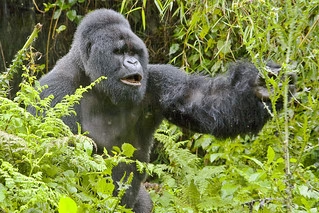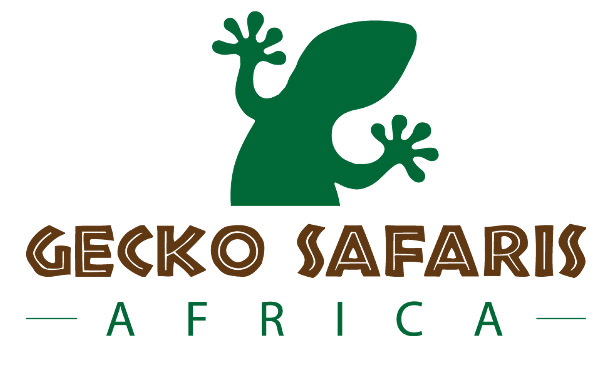How to Book Gorilla Trekking in Uganda.Book gorilla trekking Uganda-Uganda wildlife tours.
Booking a gorilla trekking adventure in Uganda is an exciting process that requires a bit of planning to ensure a smooth and memorable experience. Here’s everything you need to know to successfully book your trek in Uganda’s stunning gorilla habitats.
How to book your gorilla trekking permits.
-
Choose Your Trekking Location
Uganda is home to two main national parks where you can experience gorilla trekking:
Bwindi Impenetrable National Park is located in southwest Uganda. This UNESCO World Heritage Site is home to roughly half of the world’s remaining mountain gorillas. It offers a variety of trekking routes with different levels of difficulty.
Mgahinga Gorilla National Park: Also located in southwestern Uganda, Mgahinga is smaller but offers a less crowded, more intimate trekking experience. It is part of the Virunga Mountains, a chain of volcanoes shared between Uganda, Rwanda, and the Democratic Republic of Congo (DRC).
Both parks offer fantastic opportunities for seeing mountain gorillas, so your choice of location will depend on factors such as availability, trekking difficulty, and personal preference.
-
Obtain Your Gorilla Trekking Permit
A key element in booking your trek is obtaining a gorilla trekking permit. These permits are required for all trekkers and are limited in number to ensure minimal disruption to the gorillas.
Permit Costs: As of 2024, the cost for a gorilla trekking permit in Uganda is $800 USD per person.
Availability: Permits are highly sought after, especially during peak tourist seasons (from June to September and December to February). It is advisable to book your permit 3–6 months in advance to secure your spot.
You can purchase your permit in one of the following ways:
- Through the Uganda Wildlife Authority (UWA): The UWA manages gorilla trekking in Uganda and sells permits directly through their website or their regional offices.
- Via a licensed tour operator. Many travelers book their permits through a licensed tour operator. These operators can help you secure permits, arrange transportation, and plan other elements of your trek. They also provide expertise and guidance, especially if you’re traveling internationally.
-
Choose the Best Time to Visit
While gorilla trekking in Uganda is available year-round, the best time to visit is during the dry season when trekking conditions are more favorable. The dry seasons are typically from June to September and December to February.
However, because these months are more popular, permits may be harder to secure, and prices for accommodations may be higher.
The wet season (April to May and October to November) is less crowded but may involve more challenging conditions due to muddy trails and rain.
-
Select Your Trekking Route
Each trekking route in Bwindi Impenetrable National Park and Mgahinga Gorilla National Park has its own difficulty level, so it’s important to choose one that matches your physical capabilities.
Gorilla Habituated Groups: Uganda’s gorillas have been habituated to human presence, and you will be trekking to see one of these groups. There are different groups in various parts of the parks, each offering a unique trekking experience.
Trekking Difficulty: The treks vary in difficulty from easy (shorter treks in flatter areas) to more challenging (longer, steeper routes). A tour operator can help you choose the best route based on your fitness level.
-
Book Accommodations
Accommodation options near the parks vary from budget lodges to luxurious hotels and tented camps. It’s important to book your accommodation in advance, especially during peak seasons.
Bwindi Impenetrable National Park: There are various options near the park entrance points, including eco-lodges, mid-range hotels, and luxury resorts.
Mgahinga Gorilla National Park: This park has a smaller range of accommodations but offers both budget and more luxurious options.
Tour operators often include accommodations in their packages, or you can book directly with the hotels.
-
Plan Transportation
Getting to Uganda’s gorilla trekking parks can be a bit challenging, as they are located in remote regions.
The easiest option is to arrange transportation through a tour operator, which will typically include private transfers from Entebbe or Kampala to the park.
By Air: Domestic flights are available from Entebbe to Kisoro (near Mgahinga) and Kihihi (near Bwindi), which can significantly reduce travel time.
By Road: Alternatively, you can travel by road from Kampala or Entebbe, which takes 8-10 hours depending on the park.
-
Prepare for the Trek
Once your permit, accommodations, and transportation are arranged, it’s time to prepare for the trek. Be sure to:
Pack Appropriately: Bring comfortable hiking boots, long-sleeved shirts and pants (for protection from insects), waterproof gear, and insect repellent. You’ll also want to bring a camera (without flash), binoculars, and water.
Stay Healthy: You’ll need to be in good health to trek, as it can be physically demanding. Ensure you have no respiratory issues, as the gorillas are highly susceptible to human diseases.
-
Enjoy the Experience
On the day of your trek, you’ll meet your guide and group at the designated park entrance, where you will be given a briefing about safety, the gorillas, and the trek itself.
Afterward, you’ll begin your trek into the forest, and once you spot the gorillas, you’ll be allowed to spend one hour observing them in their natural habitat.
How to Book Gorilla Trekking in Uganda
Booking gorilla trekking in Uganda is a straightforward process, but it requires advanced planning. To summarize:
- Choose a park (Bwindi or Mgahinga).
- Purchase your trekking permit either through the Uganda Wildlife Authority or a tour operator.
- Select the best time to go and book your accommodations.
- Arrange transportation to the park.
- Prepare physically for the trek.
With the right preparation, your gorilla trekking experience in Uganda will be an unforgettable adventure.


